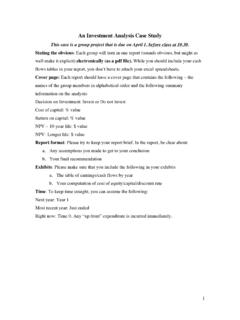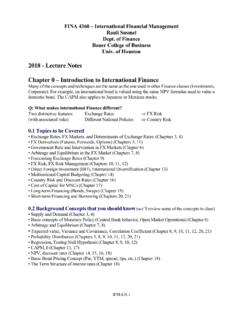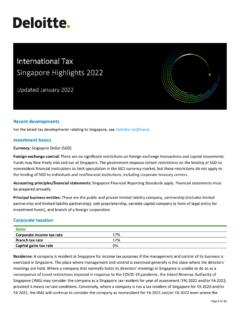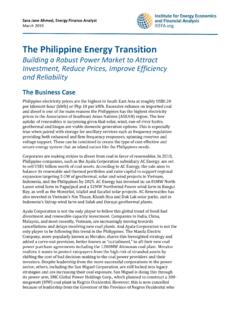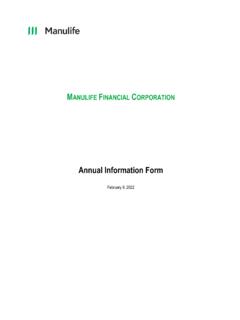Transcription of Basel Committee on Banking Supervision
1 Basel Committee on Banking Supervision Basel III: International framework for liquidity risk measurement, standards and monitoring December 2010 This document is replaced by January 2013 and October 2014 document is replaced by January 2013 and October 2014 Copies of publications are available from: Bank for International Settlements Communications CH-4002 Basel , Switzerland E-mail: Fax: +41 61 280 9100 and +41 61 280 8100 This publication is available on the BIS website ( ). Bank for International Settlements 2010. All rights reserved. Brief excerpts may be reproduced or translated provided the source is stated. ISBN print: 92-9131-860-4 ISBN web: 92-9197-860-4 This document is replaced by January 2013 and October 2014 document is replaced by January 2013 and October 2014 I. Transitional Scope of application ..2 II. Regulatory standards ..3 Liquidity Coverage Ratio ..3 1. Objective ..3 2.
2 Definition of the standard ..3 Net Stable Funding Ratio ..25 1. Objective ..25 2. Definition of the standard ..25 III. Monitoring tools ..31 Contractual maturity 1. Objective ..32 2. Definition and practical application of the 3. Utilisation of the Concentration of funding ..33 1. Objective ..33 2. Definition and practical application of the 3. Utilisation of the Available unencumbered assets ..35 1. Objective ..35 2. Definition and practical application of the 3. Utilisation of the LCR by significant currency ..36 1. Objective ..36 2. Definition and practical application of the 3. Utilisation of the Market-related monitoring 1. Objective ..37 2. Definition and practical application of the 3. Utilisation of the IV. Application issues for Frequency of calculation and reporting ..38 Scope of Observation periods and transitional arrangements for the This document is replaced by January 2013 and October 2014 Basel III.
3 International framework for liquidity risk measurement, standards and monitoring List of Abbreviations ABCP Asset-backed commercial paper ASF Available Stable Funding CD Certificate of deposit CDS Credit default swap CP Commercial paper CUSIP Committee on Uniform Security Identification Procedures ECAI External credit assessment institution IRB Internal ratings-based ISIN International Securities Identification Number LCR Liquidity Coverage Ratio NSFR Net Stable Funding Ratio OBS Off-balance sheet PSE Public sector entity RSF Required Stable Funding SIV Structured investment vehicle VRDN variable Rate Demand Note This document is replaced by January 2013 and October 2014 III: International framework for liquidity risk measurement, standards and monitoring I.
4 Introduction 1. This document presents the liquidity portion of the Basel Committee s1 reforms to strengthen global capital and liquidity regulations with the goal of promoting a more resilient Banking sector. The objective of the reforms is to improve the Banking sector s ability to absorb shocks arising from financial and economic stress, whatever the source, thus reducing the risk of spillover from the financial sector to the real economy. This document sets out the rules text and timelines to implement the liquidity portion of the Basel III framework. 2. During the early liquidity phase of the financial crisis that began in 2007, many banks despite adequate capital levels still experienced difficulties because they did not manage their liquidity in a prudent manner. The crisis again drove home the importance of liquidity to the proper functioning of financial markets and the Banking sector.
5 Prior to the crisis, asset markets were buoyant and funding was readily available at low cost. The rapid reversal in market conditions illustrated how quickly liquidity can evaporate and that illiquidity can last for an extended period of time. The Banking system came under severe stress, which necessitated central bank action to support both the functioning of money markets and, in some cases, individual institutions. 3. The difficulties experienced by some banks were due to lapses in basic principles of liquidity risk management. In response, as the foundation of its liquidity framework, the Committee in 2008 published Principles for Sound Liquidity Risk Management and Supervision ( Sound Principles ).2 The Sound Principles provide detailed guidance on the risk management and Supervision of funding liquidity risk and should help promote better risk management in this critical area, but only if there is full implementation by banks and supervisors.
6 As such, the Committee will coordinate rigorous follow up by supervisors to ensure that banks adhere to these fundamental principles. 4. To complement these principles, the Committee has further strengthened its liquidity framework by developing two minimum standards for funding liquidity. These standards have been developed to achieve two separate but complementary objectives. The first objective is to promote short-term resilience of a bank s liquidity risk profile by ensuring that it has sufficient high-quality liquid assets to survive a significant stress scenario lasting for one month. The Committee developed the Liquidity Coverage Ratio (LCR) to achieve this objective. The second objective is to promote resilience over a longer time horizon by creating additional incentives for banks to fund their activities with more stable sources of funding on an ongoing basis. The Net Stable Funding Ratio (NSFR) has a time horizon of one year and has been developed to provide a sustainable maturity structure of assets and liabilities.
7 1 The Basel Committee on Banking Supervision consists of senior representatives of bank supervisory authorities and central banks from Argentina, Australia, Belgium, Brazil, Canada, China, France, Germany, Hong Kong SAR, India, Indonesia, Italy, Japan, Korea, Luxembourg, Mexico, the Netherlands, Russia, Saudi Arabia, singapore , South Africa, Spain, Sweden, Switzerland, Turkey, the United Kingdom and the United States. It usually meets at the Bank for International Settlements (BIS) in Basel , Switzerland, where its permanent Secretariat is located. 2 Available at This document is replaced by January 2013 and October 2014 These two standards are comprised mainly of specific parameters which are internationally harmonised with prescribed values. Certain parameters, however, contain elements of national discretion to reflect jurisdiction-specific conditions.
8 In these cases, the parameters should be transparent and clearly outlined in the regulations of each jurisdiction to provide clarity both within the jurisdiction and internationally. 6. It should be stressed that the standards establish minimum levels of liquidity for internationally active banks. Banks are expected to meet these standards as well as adhere to the Sound Principles. Consistent with the Committee s capital adequacy standards, national authorities are free to require higher minimum levels of liquidity. 7. To further strengthen and promote global consistency in liquidity risk Supervision , the Committee has also developed a set of monitoring tools to be used in the ongoing monitoring of the liquidity risk exposures of banks, and in communicating these exposures among home and host supervisors. Transitional arrangements 8. The Committee is introducing transitional arrangements to implement the new liquidity standards that help ensure that the Banking sector can meet the standards through reasonable measures, while still supporting lending to the economy.
9 The transitional arrangements are described in this document in Section 9. The Committee will put in place rigorous reporting processes to monitor the standards during the observation period and will continue to review the implications of these standards for financial markets, credit extension and economic growth, addressing unintended consequences as necessary. Both the LCR and the NSFR will be subject to an observation period and will include a review clause to address any unintended consequences, as outlined in section below. After an observation period beginning in 2011, the LCR, including any revisions, will be introduced on 1 January 2015. The NSFR, including any revisions, will move to a minimum standard by 1 January 2018. Scope of application 10. The application of the requirements in this document follow the existing scope of application set out in Part I (Scope of Application) of the Basel II Additional information relevant to the scope of application is outlined in Section IV.
10 11. This document is organised as follows: Section II discusses the two liquidity standards for internationally active banks. Section III presents a set of monitoring tools to be used by banks and supervisors in their monitoring of liquidity risks. Section IV discusses application issues for the standards, including the transition period and topics related to scope of application. 3 See BCBS, International Convergence of capital Measurement and capital Standards: A Revised Framework - Comprehensive Version, June 2006 (hereinafter referred to as Basel II or Basel II Framework ). This document is replaced by January 2013 and October 2014 Regulatory standards 12. The Committee has developed two standards that have separate but complementary objectives for supervisors to use in liquidity risk Supervision . The first objective is to promote the short-term resilience of the liquidity risk profile of banks by ensuring that they have sufficient high-quality liquid assets to survive a significant stress scenario lasting 30 calendar days.










